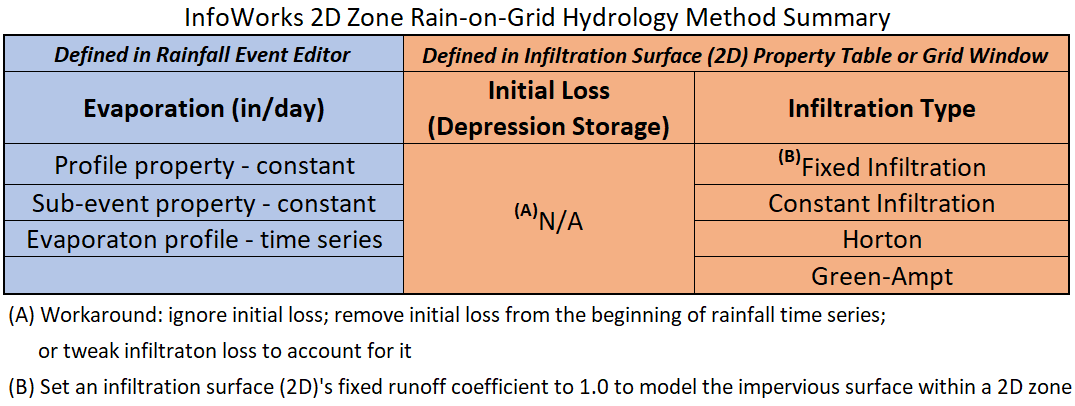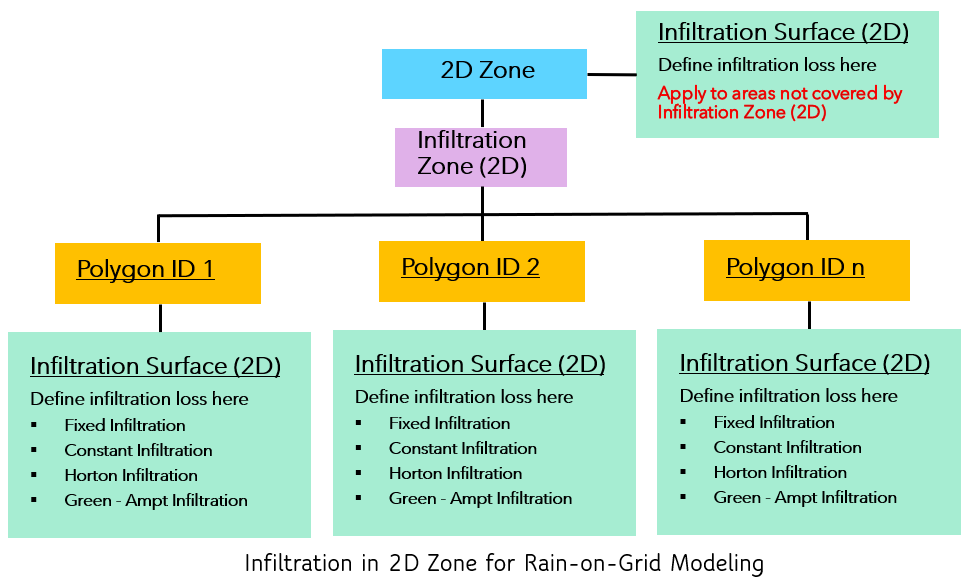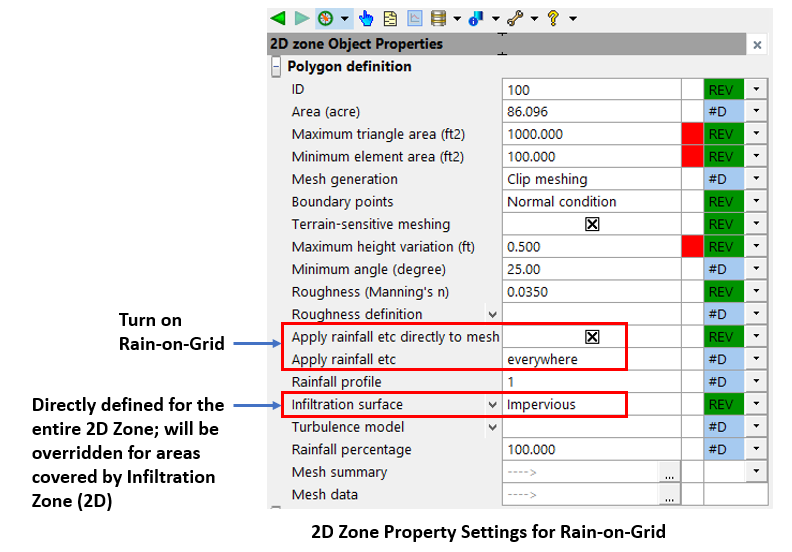Rainfall-runoff in InfoWorks ICM: Rain-on-Grid on 2D Zone
InfoWorks ICM is a powerful hydrologic and hydraulic modeling tool. As its name suggests, ICM – Integrated Catchment Modelling, InfoWorks ICM is capable of simulating 1D network and 2D surface as well as hydrology and hydraulics in one single model. In InfoWorks, two options are available to model a rainfall-runoff process – traditional subcatchment hydrology and Rain-on-Grid on a 2D zone. This post is focusing on the second method and the other post covers the first one.
Rain-on-Grid, aka direct rainfall, applies rainfall directly to a 2D zone surface. After losses (infiltration, evapotranspiration) are accounted for, the excess rainfall becomes runoff and is to be routed over 2D surface per 2D zone settings (ground model terrain and meshes, structures, overland roughness/Manning’s n, and boundary conditions, to name a few). The 2D surface runoff can flow out of 2D zone boundaries or be captured by 1D elements to enter 1D networks such as storm sewer or 1D rivers depending on 1D-2D connections. Rain-on-Grid method eliminates the needs of subcatchment delineation, time of concentration calculation, transform method or hydrology routing selection, and overland flow path determination, all of which are often quite arbitrary and depend heavily on a modeler’s experience and judgment. The drawbacks of Rain-on-Grid method include:
- Rain-on-Grid is a relatively new hydrology method, the engineering community needs time to learn and get used to it
- The existing drainage codes and design manuals are based on the traditional subcatchment hydrology methods (peak flows and hydrographs) and it takes time for regulating agencies to formally adopt Rain-on-Grid method
- Lack of enough criteria and guidelines for H&H modeling and design using Rain-on-Grid
- Old designs were most likely done using one of the traditional hydrology methods. It is not well studied how these old designs would behave under Rain-on-Grid hydrology
- The 2D zone ground model and meshes usually lack enough details to adequately predict the flows into/out of 1D network for the purpose of designing a storm sewer system
For the reasons mentioned above, currently the most common applications of Rain-on-Grid method are to perform quick drainage and flood mitigation analyses (Quick 2D!), or do some preliminary engineering/planning level drainage studies.
Four (4) infiltration methods are available for InfoWorks Rain-on-Grid on a 2D zone (Table 1). It is worth noting that currently InfoWorks ICM of 2021 could not handle initial loss or depression storage for Rain-on-Grid, but there are workarounds if initial loss needs to be accounted for explicitly.

Most of the Rain-on-Grid hydrology parameters need to be provided under 2D zone, infiltration zone (2D), infiltration surface (2D) property editors or the polygon grid windows in InfoWorks (Figure 1, Figure 2, and Figure 3).



In Figure 2, the 2D zone rainfall profile is selected as “1”. When running the model, the rainfall event needs to have a profile with exactly the same name of “1”; otherwise, an error message will pop up and the run will be suspended (Figure 4). It is worth noting that this behavior is different from the similar situation under the subcatchment hydrology of InfoWorks ICM: as explained in this post, InfoWorks ICM will apply the leftmost rainfall event profile to a subcatchment if its rainfall profile name could not be found in the specified rainfall event in a model run.

Leave a Reply